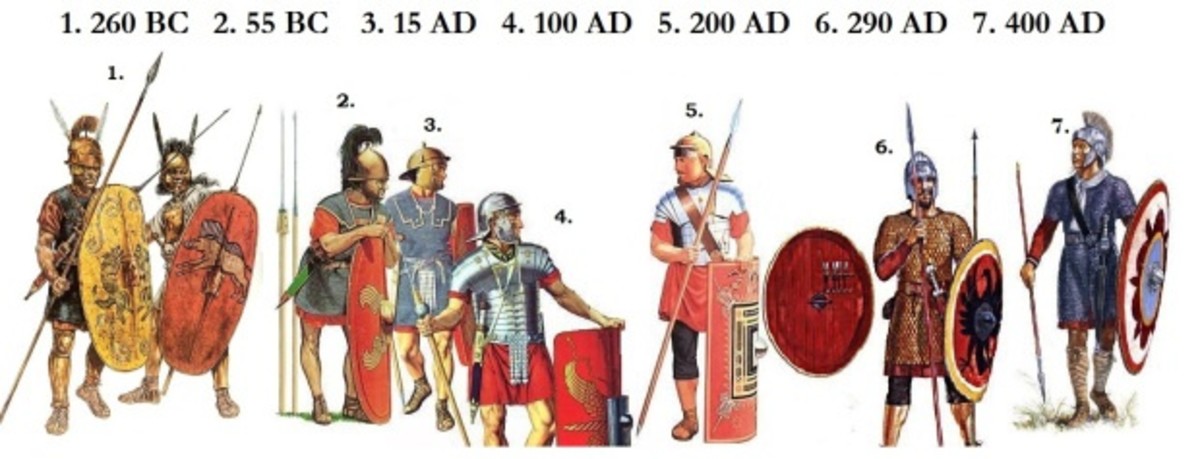How to Outline a Research Paper for College or High School

Writing Research Papers Doesn't Have to be Hard!
Many of my students struggle writing research papers because they approach them backwards. Often, students will just start writing something -- anything -- and hope it sort of turns into a good paper somehow. Often research is done during the writing process itself to quickly fill in some paragraph that feels light, and the conclusion is a rushed mess that has no bearing on the topic of the paper as presented. The process of writing a research paper is very simple, and can be implemented by anyone.
- Research your topic with an idea for a paper in mind.
- Write just the first paragraph of the paper, up to the thesis statement, in a manner that lays out the whole argument of the paper
- Use the introductory paragraph to construct an outline, fleshing out each point in the introductory paragraph.
- Investigate the outline and make sure you have at least two sources of research for each point on the outline.
- NOW YOU START WRITING!
The amount of work done before the paper even begins is the key to success. That extra care and organization makes all the difference between a daunting, midnight rush to completion and a stress-free, problem-free final draft.

How Do You Research for a Paper?
Research is obviously the meat and potatoes of the research paper, and an important first step on your path to success. Just knowing a little bit about something is not enough. Begin with an area of interest. Often a professor or teacher may provide initial guidance by suggesting a controversion topic, a literary comparison and contrast, or a position of personal interest from a pre-approved list.
Narrowing down the topic of interest into an argument requires an eye for what a successful argument looks like. Take a strong position, with a confidence of purpose. For instance, if the paper is about comparing two works of literature, make a bold statement about what both works intend to "say" about the themes they share. Is one of them a stronger statement? Is one of them diminished by some flaw or prejudice in the work? Think of a bold claim that may not seem obvious to a casual observor.
During your research, you're not just looking for the facts of this or that topic. What you're really looking for in your initial investigation into a topic is the argument you'd like to make.
Let me state that again, and bold it and italicize it because it is a key point that must be internalized.
The First Wave of Research is All About Locating a Strong Argument in the Data.
The initial research is not time to start writing, or accumulating copious quotes or laying out the outline. The very first step is just researching to find the argument itself.
One of the limitations against which students often stumble is that they choose a topic they feel strongly about and construct an argument with which they already agree. Feeling so strongly about the issue can often blind the student to the weak areas in the argument. A clinical eye to the data makes it easier to construct a compelling argument.
Just... One... Paragraph...
Often the hardest part of a paper is knowing where to begin. Creating the first paragraph is a challenge, often because students don't know the form that they are actually writing. Research papers are not personal essays. Focusing on the meat of the argument is key to constructing a solid introduction. Begin by stating the clear facts that support your argument. Line them up in a clean, simple style. Practice reading it aloud, and see if the facts line up.
This is no place for long, personal expression. You are here to state the facts as they relate to the argument. If someone disagrees with you, and you are going to shoot them down, mention the argument and that they are incorrect. Keep it short and brief. The first paragraph should be reminiscent of the first paragraph of a news story. Tell the whole argument, in an abbreviated fashion, such that someone could know the whole argument in one paragraph.
Hey, guess what? You've just created an outline for your paper without even trying!
Outline Time
So, you've written a killer first paragraph. You've laid out a fool-proof argument in a single paragraph that should convince everyone of what your argument is. Great. Wonderful. Pick that paragraph apart, point-by-point, and lay it out in a row. Each point becomes the topic sentence of a section of your paper.
Now, go back over the research and locate two or three pieces of data or quotations to pull into each section.
This is one of those moments that makes good papers great papers, because you have an opportunity to see where your research is weak. If you don't have enough data to support a claim, you will find out shortly!
- How to Write a Research Paper, or Any Paper
Research Papers can be a challenge for inexperienced writers, but beginning with an appropriate topic, and sustaining the topic with research is the key to success!
The Research is ready, the Outline is done. Now we write a paper!
Go back over your outline again, and again. Try to make sure you are outlining a strong argument. When you think you've got the best argument based on your data, it is time to start writing!
At this point, all you really shiould be doing is filling out your outline. You've already got the first paragraph. You've got all the research you need. Fill in those blanks in between to construct the paper. This should be relatively easy since all the heavy-lifting is already done. Now it's just subject, verb, and object, some quotations, and a brief review of MLA or Chicago/Tarabian or APA style guidelines.
You can do it!









